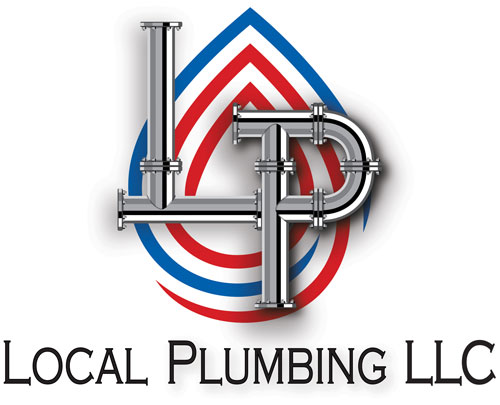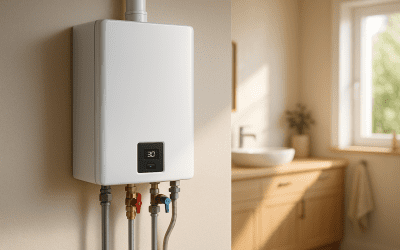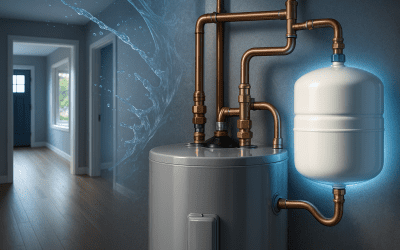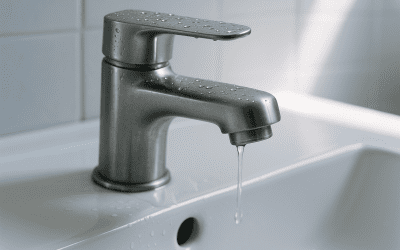Knowing the possible causes can save you time, money, and stress. In this guide, we’ll break down ten common reasons why your home might be losing water pressure and what you can do to fix it.
1. Clogged faucets or showerheads
Minerals like calcium and lime often build up inside faucet aerators or showerheads, especially if your house has hard water. Over time, these deposits narrow the openings, which reduces pressure and slows the flow. Dirt and small debris from the pipes can also get trapped in these fixtures. If only one sink or shower in your home has poor flow, the cause is often a simple blockage. Cleaning or replacing the affected part usually restores normal water flow.
2. Corroded plumbing pipes
In older homes, galvanized steel pipes can corrode from the inside after decades of use. This corrosion forms thick layers that reduce the space inside the pipe, making it harder for water to pass through and lowering pressure. The problem often gets worse slowly, so you might not notice it until the flow becomes very weak. Replacing corroded pipes with newer materials like copper or PEX is the only lasting solution.
3. Leaking pipes or hidden water damage
When a pipe leaks, even slightly, some of your water escapes before it reaches your taps. This loss directly reduces the pressure in your house plumbing. Leaks can occur in visible areas or be hidden behind walls, under floors, or underground. Signs of trouble include damp spots, peeling paint, musty odors, or a sudden jump in your water bill. If ignored, leaks can cause structural damage and mold growth, along with weak water flow.
4. Partially closed shut-off valves
If your water pressure has dropped, one of the simplest things to check is the shut-off valves in your home. These valves control the water supply, either for the entire house or for individual fixtures, and a partially closed valve can easily restrict water flow. This often happens after plumbing repairs, when a valve isn’t reopened all the way. The main shut-off valve is usually located near the water meter or where the main supply line enters your home, while fixture-specific valves are typically found under sinks or behind toilets.
5. Failing pressure regulator
A pressure regulator, also called a pressure-reducing valve, keeps your water pressure within a safe and steady range. If it stops working, pressure may drop too low across the entire house. You might also notice uneven flow from different fixtures. Because installing and adjusting a regulator requires experience, it’s best to have it checked or replaced by a professional plumber in Cibolo.
6. Problems with the municipal water supply
Sometimes the issue doesn’t stem from your home’s plumbing at all, it originates with the local water system. City maintenance projects, damaged public pipelines, or seasonal demand surges can reduce water pressure across your neighborhood. This is particularly common in the hot summer months, when households increase water usage for lawns and gardens. If your neighbors are experiencing similar issues, the cause is most likely outside your home.
7. Shared supply lines or peak usage times
In certain neighborhoods, homes share the same water supply line, and when multiple households use water heavily at the same time, such as during morning showers or evening laundry, the available pressure drops. This often leads to low water pressure in house plumbing systems, making it a recurring problem at specific times of the day.
8. Faulty fixtures or appliances
Not all low water pressure problems come from the pipes. Sometimes the cause is a fixture or appliance that’s damaged, poorly designed, or fitted with a restrictive flow device. Washing machines, dishwashers, and even modern faucets often have built-in filters or regulators that can clog over time. When this happens, the water flow from that device drops even if the rest of the house has good pressure.
9. Blocked or broken main water line
The main water line delivers supply from the street or well to your house. When this line becomes blocked by debris, tree roots, or mineral buildup, water pressure can drop throughout your home. In more severe cases, cracks or breaks in the line not only reduce pressure but can also cause flooding in your yard or lead to foundation damage. Fixing a main line problem is a serious task that requires immediate professional attention.
10. Well or pressure tank problems
Homes that rely on a private well use a pump and pressure tank to move water into the plumbing system. If the pump is worn out, the tank loses its air charge, or the pressure switch is faulty, the result is weaker pressure throughout the house. Regular inspections and servicing help keep these systems running smoothly, but once problems start, they can worsen quickly if left unchecked.
Preventive Measures to Avoid Low Water Pressure in the Future
You can prevent many cases of low water pressure by keeping your plumbing system in good condition and addressing small issues before they grow into bigger problems. Some practical steps include:
- Clean faucets and showerheads regularly by removing them and soaking them in vinegar every few months, which helps clear away mineral deposits and debris that can block water flow.
- Check for leaks and fix them promptly by watching for damp spots, peeling paint, mold growth, or unexpected increases in your water bill, as even small leaks can reduce pressure and cause costly damage.
- Schedule regular plumbing inspections so a licensed plumber can check pipes, valves, and main lines each year, helping catch problems like corrosion or sediment buildup before they cause major pressure loss.
- Flush your plumbing system once or twice a year by running water at high speed through all taps to help remove loose sediment that could otherwise build up inside your pipes.
- Maintain pressure regulators and well systems by testing your regulator periodically and, if you use a well, having the pump, tank, and pressure switch serviced according to the manufacturer’s recommendations.
- Be mindful of peak usage times by avoiding the use of multiple high-demand appliances at the same time during busy hours, especially in neighborhoods with shared supply lines, to help maintain steady water pressure.
By following these steps, you can significantly reduce the chances of sudden or ongoing low water pressure and ensure your home’s plumbing system continues to work efficiently.
Final Thoughts
Even when we know the right preventive measures, some low water pressure problems need more than just basic maintenance. Hidden leaks, damaged main lines, or complex plumbing issues often require professional expertise to diagnose and repair effectively. That’s where Local Plumbing, LLC can help. Our experienced team has the skills, tools, and knowledge to quickly identify the cause of low water pressure and restore your home’s water flow to normal. If you need a trusted plumber in Schertz, we are ready to assist. Contact us today at (210) 978-3995 to schedule an inspection.




